Top 5 Archaeological Discoveries in Greece in 2024
From a mysterious Minoan structure to...
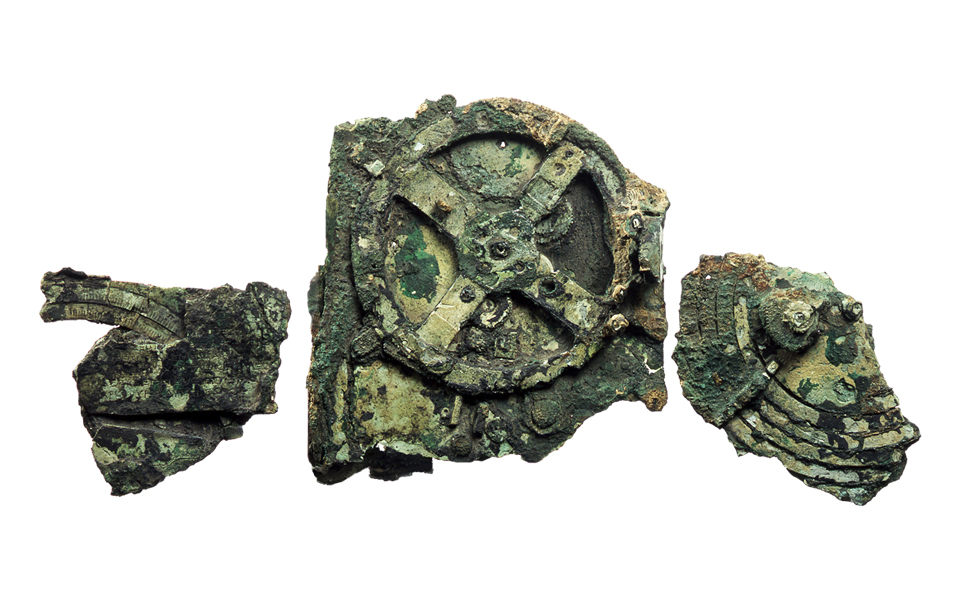
Constructed sometime around 200 BC, the Antikythera Mechanism was designed to track celestial movements, predict astronomical positions, and display various astronomical cycles.
The archaeological heritage of Greece is exceptionally rich and diverse, spanning many thousands of years of human history. From artifact-rich cave sites to the monumental architecture of Classical Athens, Greece is a treasure trove of archaeological sites and objects that provide invaluable insights into the origins and early development of Western civilization.
The significance of Greece’s archaeological heritage extends far beyond its own national boundaries. Not only do iconic sites like the Acropolis of Athens, the Delphic Oracle, and the ancient city of Olympia showcase the architectural brilliance and artistic achievements of the ancient Greeks, they form an essential part of the human story; tangible remnants of the past that continue to influence the aesthetics, philosophical ideals, and political systems of our own time.
Greek archaeology encompasses countless sites, monuments, and objects, far too numerous to list or rank in any objective order. We all have our own biases and areas of special interest. Nevertheless, we have attempted to piece together a short list of some of the country’s most definitive discoveries – findings that have perhaps contributed the most to our current understanding of the various social structures, religious beliefs, artistic traditions, and technological advancements of the prehistoric and ancient Greeks.
As ever, the list below is by no means exhaustive, and there will be many sites or objects that you think should trump the ones we’ve selected here. In any case, we’ve done our best to encompass as much of Greek prehistory and ancient history as possible, from the earliest evidence of human activity in the Palaeolithic (Old Stone Age), to the high culture of the late Hellenistic period.
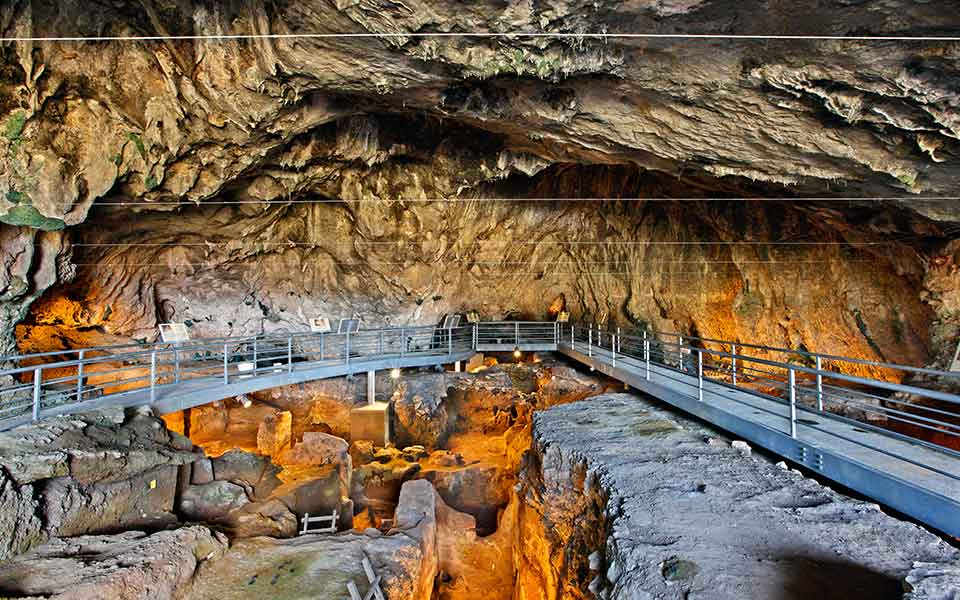
Theopetra Cave, literally "God's Stone," is located 3km from Kalambaka.
© Shutterstock
Located on the northeast side of a limestone hill, 3km south of Kalambaka in the central Greek region of Thessaly, Theopetra Cave is widely regarded as one of the most important prehistoric sites in Europe. Continuously occupied for more than 130,000 years, from the Middle Palaeolithic to the end of the Neolithic, c. 3000 BC, the wealth of artifacts and human remains found within the cave have made it an unrivalled resource for studying the transition from early hunter-gatherer societies to settled agricultural communities in the eastern Mediterranean.
Systematic excavations first began in 1987 under the direction of Greek archaeologist Nina Kyparissi-Apostolika and continued for a period of 20 years. During that time, numerous artifacts were unearthed, including stone tools, dozens of human burials, animal bones, and some of the region’s earliest types of pottery, as well as the oldest known man-made structure in the world: a stone wall, dated to c. 21,000 BC, built to partially seal off the entrance to the cave. Interestingly, the construction of the wall coincided with the peak of the last ice age, a time when average global temperatures were 6 degrees Celsius cooler than today.
Among the most striking finds were the 135,000-year-old footprints of at least three Neanderthal children, originally left in the cave’s soft earthen floor, and the well-preserved remains of a young woman, who was carefully laid to rest in the cave around 9000 years ago, during the Mesolithic (Middle Stone Age). Named “Avgi,” the Greek word for “Dawn,” analysis of her bones indicate that she suffered from anemia, lack of vitamins and possibly scurvy, and was between 15 and 18 years old when she died.
Conversely, a more recent study of the bones of 43 people who lived in the cave towards the end of the Neolithic show that they were quite a healthy group, subsisting on a diet of wheat, barley, olives, and pulses – staples of the traditional Greek-Mediterranean diet that we all know and love today!
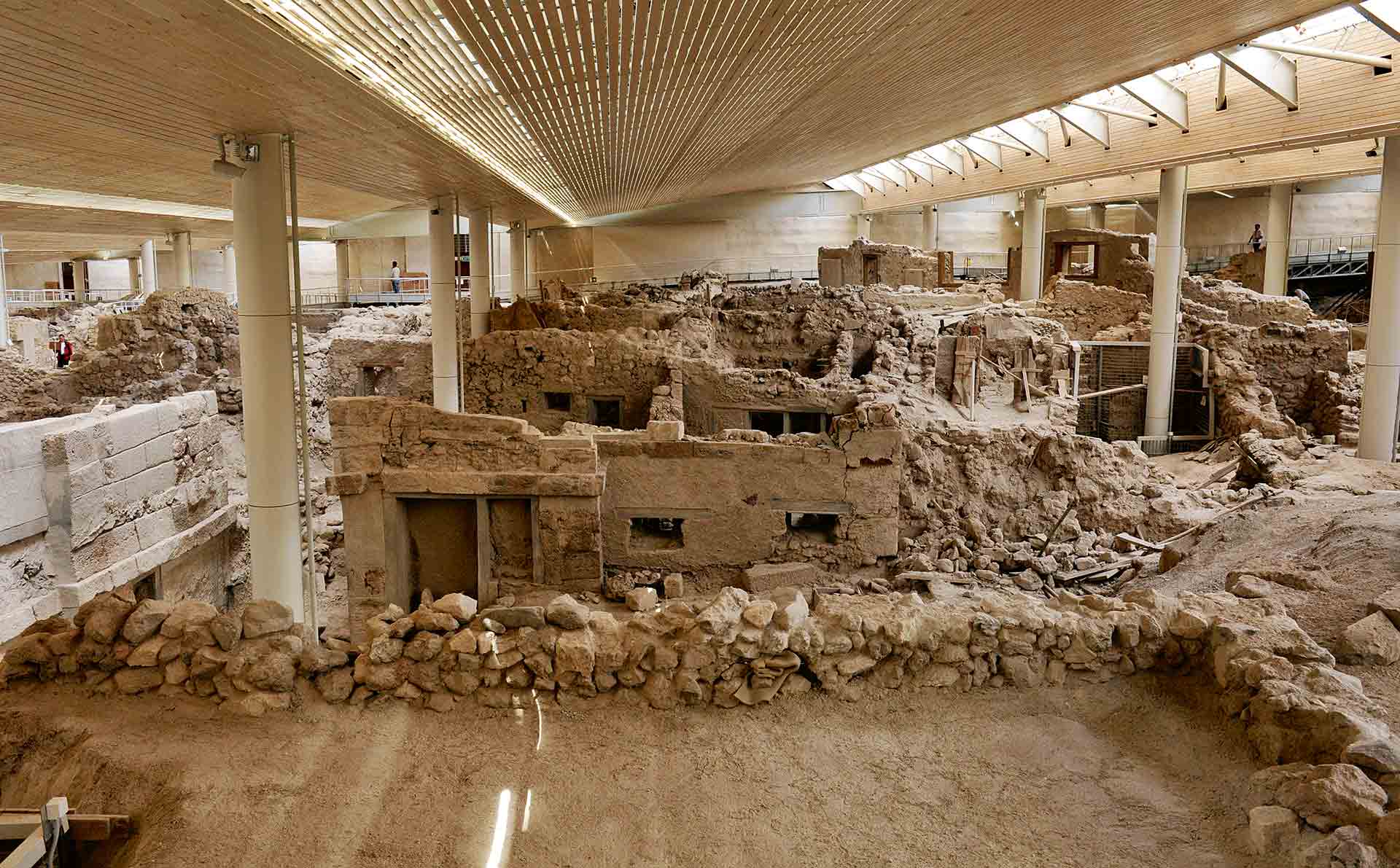
Akrotiri, Thera - "Pompeii of the Aegean"
© Vangelis Zavos
The Late Cycladic settlement of Akrotiri, located on the island of Santorini, is one of the most well-preserved prehistoric sites in the world, offering a remarkable glimpse into a highly sophisticated Bronze Age culture that thrived in the Aegean over 3,500 years ago.
Dubbed the “Pompeii of the Aegean,” the town was buried under thick layers of volcanic ash following the eruption of the Thera volcano, c. 1600 BC, similar to the ancient Roman town of Pompeii in Italy. Tephra deposits from this cataclysmic eruption, referred to as the “Minoan eruption” – one of the most catastrophic volcanic events in human history – are found throughout the Aegean and eastern Mediterranean region, providing an important reference point for archaeological dating (a “horizon marker”). Some prehistorians have speculated that the eruption precipitated the demise of Minoan civilization on nearby Crete.
Modern excavations were started at Akrotiri in 1967 by the legendary Greek archaeologist Spyridon Marinatos (1901-1974), who carefully unearthed a vast and well-preserved urban settlement frozen in time, complete with stone-paved streets and squares, multi-story buildings, elaborate frescoes, pottery, wooden furniture, and advanced water drainage systems. Mysteriously, no un-interred human remains have thus far been found at the site, suggesting the inhabitants may have fled the island prior to the final eruption.
The numerous artifacts discovered at the site, including imported goods from Minoan Crete, the Dodecanese islands, Cyprus, Syria, and Egypt, highlight the town’s role as an important hub for maritime trade in the wider eastern Mediterranean.
Akrotiri is perhaps best known for its brightly colored frescoes, depicting scenes from everyday life, religious rituals, and nature. These vibrant artworks, executed with extraordinary skill and sophistication, provide valuable insight into Bronze Age Aegean artistry, aesthetics, and cultural practices.
For more detailed information about the site, click here.
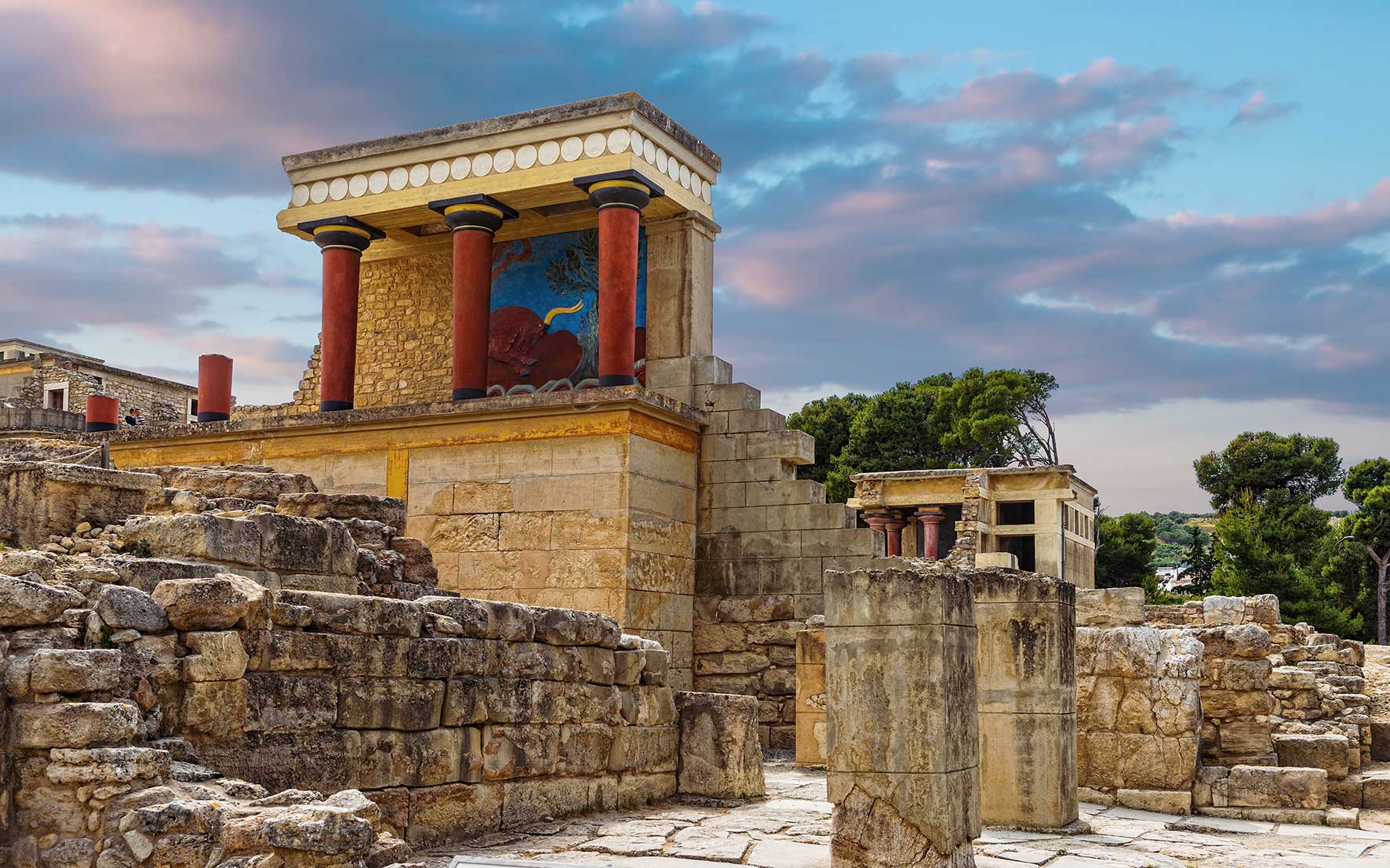
The Palace of Knossos, Crete, was the center of Minoan civilization
© Shutterstock
The Palace of Knossos, located on the outskirts of the modern city of Irakleio, is the most prominent and best-preserved site associated with Crete’s Bronze Age Minoan culture, Europe’s first major civilization.
The palace complex, dating back to approximately 1900 BC, was a thriving administrative, ceremonial, and economic center, featuring a labyrinthine layout of interconnected buildings, courtyards, storerooms, and workshops. The architectural marvel of the palace is best characterized by ornate frescoes, grand staircases, and an advanced drainage system, showcasing the remarkable engineering skills and artistic achievements of the Minoans.
Knossos is intrinsically linked to the legendary King Minos and the myth of the Minotaur. According to Greek mythology, the palace housed a labyrinth designed by the master craftsman Daedalus, where the mythical Minotaur, a half-man half-bull creature, resided. But beyond its mythical associations, the palace’s significance lies in its role as a cultural and economic hub that connected Bronze Age settlements across the Aegean Sea, and influenced societies as far afield as southern Italy, Egypt, and the Levant.
Moreover, the Palace of Knossos played a pivotal role in the development of Greek archaeology as a discipline. The site was excavated in the early 20th century by British archaeologist Sir Arthur Evans, who meticulously reconstructed large portions of the palace. Evans’ restoration work, while controversial, has allowed visitors to experience the grandeur of the Minoan palace and provided valuable insights into ancient architecture and urban planning.
Over a century of archaeological excavations at the site have revealed numerous artifacts, including pottery, tools, elaborate jewelry, religious items, and clay tablets featuring the as-yet-undeciphered Linear A script, the earliest known writing system in Europe. These findings shed light on Minoan social structure, religious practices, artistic traditions, trade networks, and technological advancements.
For more on the Palace of Knossos, click here.
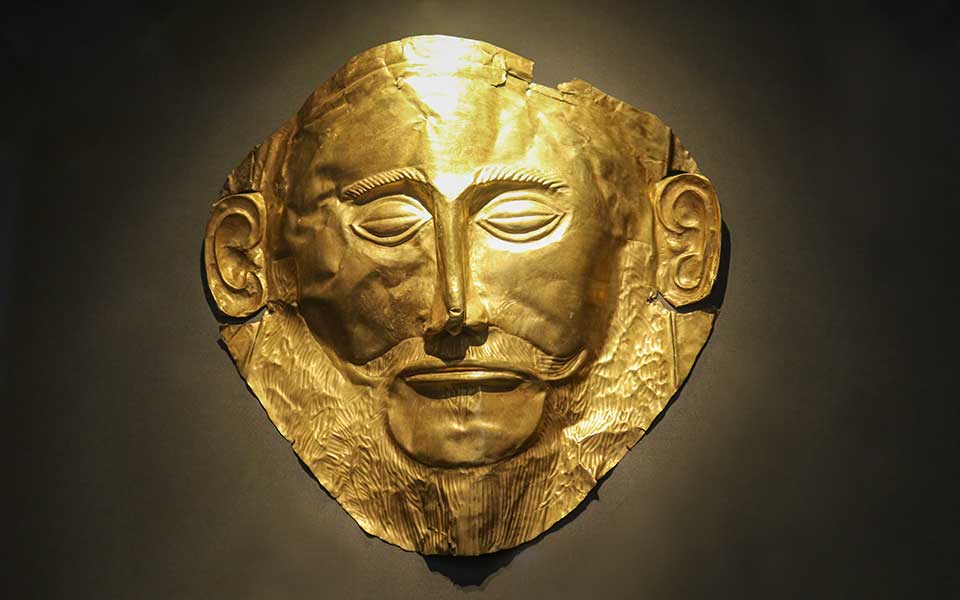
The gold funeral mask, famously known as the “Mask of Agamemnon,” was discovered in Grave Circle A at Mycenae.
© Shutterstock
Discovered by German archaeologist Heinrich Schliemann (1822-1890) in the summer 1876, during his excavations at the Late Bronze Age citadel of Mycenae in the Greek Argolid, the gold funeral mask, believed to have adorned the face of a deceased king or noble, is arguably the most iconic symbol of Mycenaean culture.
Upon its discovery in Grave Circle A, just to the south of the famous Lion Gate entrance to the citadel, Schliemann famously boasted: “I have gazed upon the face of Agamemnon.” The mask’s striking design and craftsmanship immediately captured the imagination of the public and scholars alike. Made of hammered gold and featuring intricate facial details, including a prominent mustache and beard, raised eyebrows, and detailed eye sockets, the mask’s regal appearance led to its association with Agamemnon, the legendary king of Mycenae, and a central figure in Homer’s “Iliad.” In her 2011 book, “The Tomb of Agamemnon,” academic Cathy Gere referred to the mask as the “Mona Lisa of prehistory.”
Currently on display in the Mycenaean Gallery of the National Archaeological Museum in Athens, the mask highlights the exceptional artistic skills and craftsmanship of the Mycenaeans, the first advanced and distinctly Greek civilization that flourished on the mainland from c. 1600 to 1200 BC. The mask’s exquisite details, delicate goldwork, and lifelike portrayal of a man’s face showcase the advanced techniques and aesthetic sensibilities of the Late Bronze Age culture.
Known for its heavily fortified palace sites and militaristic infrastructure, the Mycenaeans superseded the Minoans as the dominant power in the Aegean by the middle of the 2nd millennium BC. Their syllabic script, Linear B, deciphered in 1952 by the English architect and linguist Michael Ventris, represents the earliest attested from of Greek, and provides extraordinary insight into the day-to-day economic administration of the palaces.
Scholarly debate regarding the gold funeral mask’s association with the fabled king has raged since its discovery nearly 150 years ago. Some argue that it predates Agamemnon’s supposed existence towards the end of the 13th century BC by at least 300 years, while one study dated it even further back to the mid-third millennium BC. Regardless of its connection to Agamemnon, the mask remains a powerful symbol of the grandeur, wealth, and artistic prowess of Mycenaean civilization.
Click here for more on the “Mask of Agamemnon.”
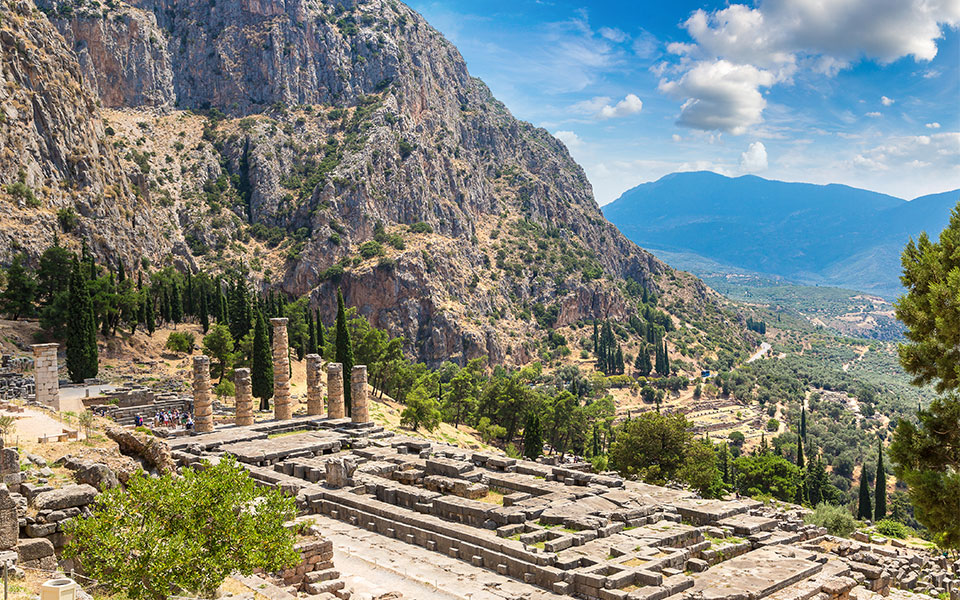
The Temple of Apollo at Delphi
© Shutterstock
The UNESCO World Heritage Site of Delphi is one of the most popular archaeological sites in Greece, welcoming over half a million visitors a year. Set within the spectacular landscape of Phocis, Central Greece, at the foot of Mount Parnassos, the pan-Hellenic sanctuary was the most important cultural and religious center in the ancient Greek world, regarded as the center (“omphalos” – navel) of the world. From the 8th century BC, it was also the seat of the mysterious Delphic Oracle.
Associated with the god Apollo, the Oracle was believed to speak through the Pythia, the priestess who delivered the prophecies. Pilgrims from all over Greece and beyond flocked to Delphi seeking guidance and insight into important matters. The Pythia’s prophecies were enigmatic and often open to interpretation, requiring skilled priests known as interpreters to provide advice based on her utterances.
Systematic excavations began at the site in the late 19th century, under the auspices of the Greek state and the French Archaeological School of Athens. Over the course of the 10-year “Great Excavation,” as it was known, archaeologists made a series of spectacular discoveries, including copious inscriptions, the ruins of ancient treasuries, well-preserved statues (the bronze Charioteer being the best example), altars, a stadium, and the Sacred Way, the street that led to the Temple of Apollo, where Pythia delivered her oracles.
The political significance of Delphi in the ancient Greek world was immense. The Oracle’s pronouncements could sway alliances, shape military strategies, and influence the establishment of overseas colonies. City-states and rulers sought to gain favor with the Oracle and used her prophecies to legitimize their actions and gain popular support. In doing so, they erected ever more elaborate and ornate treasuries along the Sacred Way, to house dedications and votive offerings to Apollo.
Most importantly, Delphi served as a powerful unifying force in the Greek world. The sacred precinct was a place of pilgrimage, drawing people from various city-states together in a shared spiritual and cultural experience. It fostered a sense of shared Hellenic identity and provided a platform for interaction and exchange.
Check out our guide to Delpi and the surrounding area here.
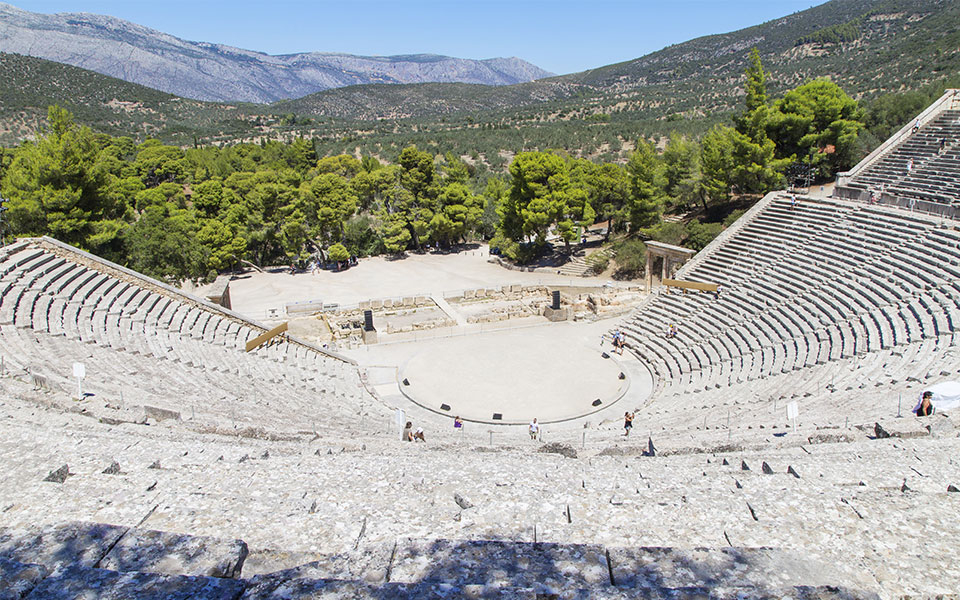
The Ancient Theater of Epidaurus is widely regarded as "the most perfect ancient Greek theater."
© Shutterstock
The Ancient Theater of Epidaurus, located in the Sanctuary of Asclepius in the Greek Argolid, is a masterpiece of Greek engineering and design. Built in the late 4th century BC, it is celebrated for its exceptional acoustics and architectural symmetry; regarded by scholars as the “most perfect ancient Greek theater,” based on modern measurements and analysis of its acoustics.
Nestled on the western slope of Mount Cynortion and overlooking the Sanctuary, the theater is constructed in the characteristic “tripartite” structure, featuring a concave “theatron” (seating area), a circular orchestra (performance space), and a “skene,” a structure at the back of the stage (from which the word “scene” derives). The vast seating area, divided into two sections, rises in a gentle slope to accommodate approximately 14,000 spectators.
Even today, the theater’s design allows for optimal sound transmission, ensuring that even the softest whisper or musical note can be heard clearly by the entire audience, regardless of their seating location.
The Theater of Epidaurus holds significant historical and cultural value as a testament to the importance of theater in ancient Greek society. The performances held at Epidaurus were part of the religious festivals dedicated to Asclepius, the Greek god of healing. The plays staged at the theater were predominantly tragedies, exploring profound themes of human existence, morality, and the struggles of the human condition.
Today, the theater continues to captivate visitors from around the globe. The annual Athens-Epidaurus Festival, held during the summer months, showcases a variety of performances, ranging from ancient Greek dramas to contemporary plays and musical concerts. It stands as a testament to the enduring legacy of Greek theater and its profound impact on global cultural heritage.
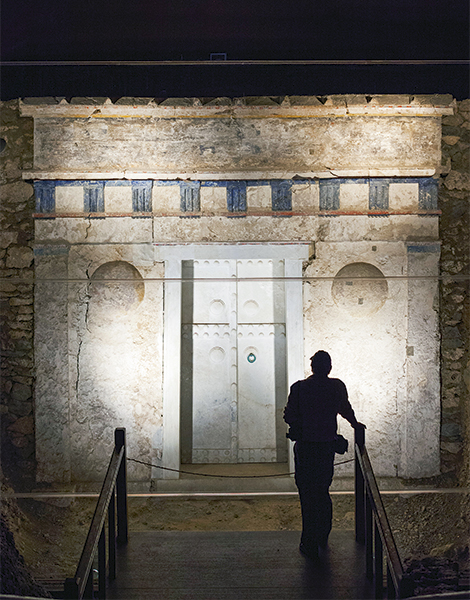
The monumental entranceway to Philip II's tomb
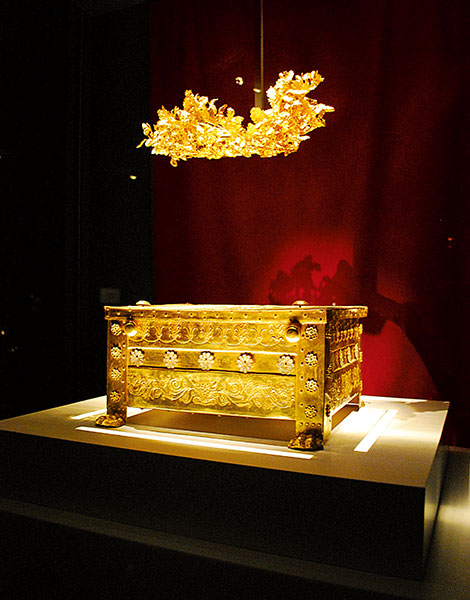
The king's golden larnax
Unearthed in 1977 at the site of ancient Aigai, the first capital of the kingdom of Macedon, the undisturbed Tomb of Philip II is one of the most spectacular discoveries in the history of Greek archaeology.
Careful excavation of the site by Manolis Andronikos (1919-1992), discovered within a large tumulus (burial mound), revealed multiple chambers adorned with elaborate frescoes and containing treasures of breathtaking beauty, including gold embossed suits of armor, weapons, silver and bronze utensils, a golden oak wreath, and the famous 24-carat gold larnax (closed coffin), containing the skeletal remains of the king.
The importance of the tomb lies in its association with one of the most influential figures in world history. A member of Argead dynasty, Philip II (382-336 BC) was a visionary ruler who transformed the kingdom of Macedon into a formidable power, laying the foundation for the conquests of his son, Alexander the Great. Philip’s military reforms, political strategies, and cultural patronage played a pivotal role in shaping the course of history during the political upheavals of the 4th century BC, as he sought to become the undisputed hegemon (commander-in-chief) of all Greece.
Assassinated by one of his bodyguards in Aigai’s theater on October 21, 336 BC, his ornate tomb provides invaluable insights into the burial customs and royal rituals of the Macedonian dynasty. It offers a glimpse into the opulence and wealth associated with the ruling elite, while many of the frescoes and burial goods reflect the artistic fusion of Greek and local Macedonian traditions.
The tomb also sparked extensive and ongoing research on the king’s remains. Analysis of the skull revealed extensive damage to the right eye, likely caused by an arrow. It was recorded that Philip suffered such a wound at the siege of Methone in 355-354 BC, after which he had his eye surgically removed.
Read more about the Royal Tombs of Aigai here.
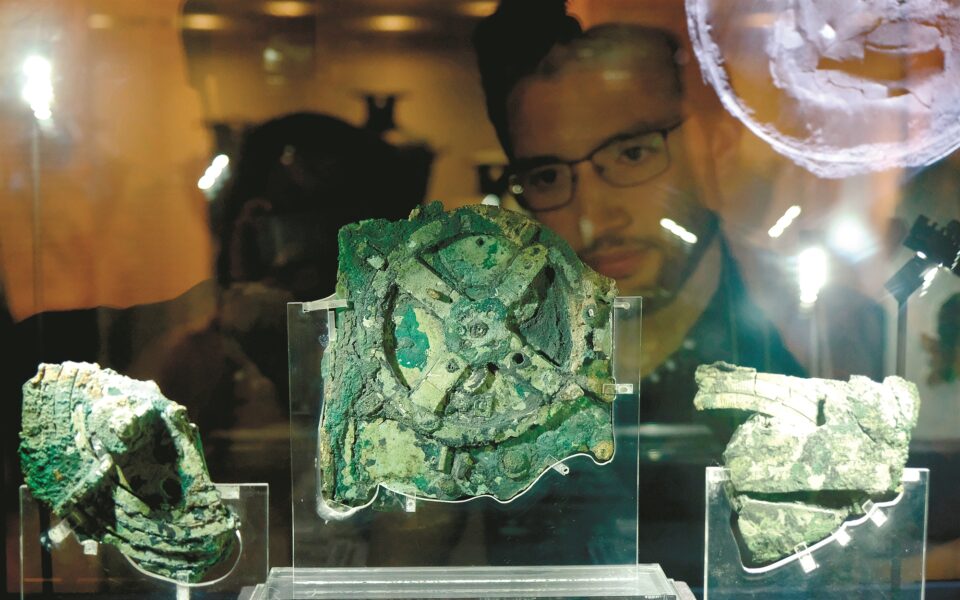
The Antikythera Mechanism, the world's oldest analog computer.
© Shutterstock
The Antikythera Mechanism is an ancient device that continues to captivate scientists and historians the world over. Discovered in 1901 by sponge divers during salvage operations of an ancient shipwreck near the island of Antikythera, it is considered one of the most significant archaeological finds in human history.
Dated to the late 2nd or early 1st century BC, the mysterious device is an intricate, complex mechanical instrument that consists of a series of interlocking gears and dials encased in a wooden box. It appears to have been designed to track celestial movements, predict astronomical positions, and display various astronomical cycles. The device also incorporated a sophisticated calendar, eclipse predictions, and even the cycle of Olympic Games. As such, it has been dubbed as the world’s first analog computer.
The importance of the Antikythera Mechanism lies in its groundbreaking technological achievements, showcasing a level of mechanical sophistication and astronomical knowledge that was previously thought to be beyond the capabilities of ancient societies. The device demonstrates an advanced understanding of gears, precise engineering, and complex calculations. Its design is a testament to the extraordinary ingenuity of the Greeks, described by expert Magdalini Anastasiou as “the single greatest achievement of the ancient mind.”
The Antikythera Mechanism has been the subject of near constant research since its discovery over 120 years. In more recent times, scientists have used advanced imaging techniques, including X-rays and 3D scanning, to reveal previously hidden inscriptions and better understand the mechanism’s functions. These investigations have shed light on the mechanical workings and intricate details of the device, allowing for more accurate reconstructions and interpretations.
All known fragments of the mechanism are on display in the National Archaeological Museum in Athens, alongside various reconstructions and working replicas.
Read more about this enigmatic device here.
From a mysterious Minoan structure to...
From Mycenaean citadels to ancient stadiums,...
Beneath the busy streets of modern...
In a land where the past...